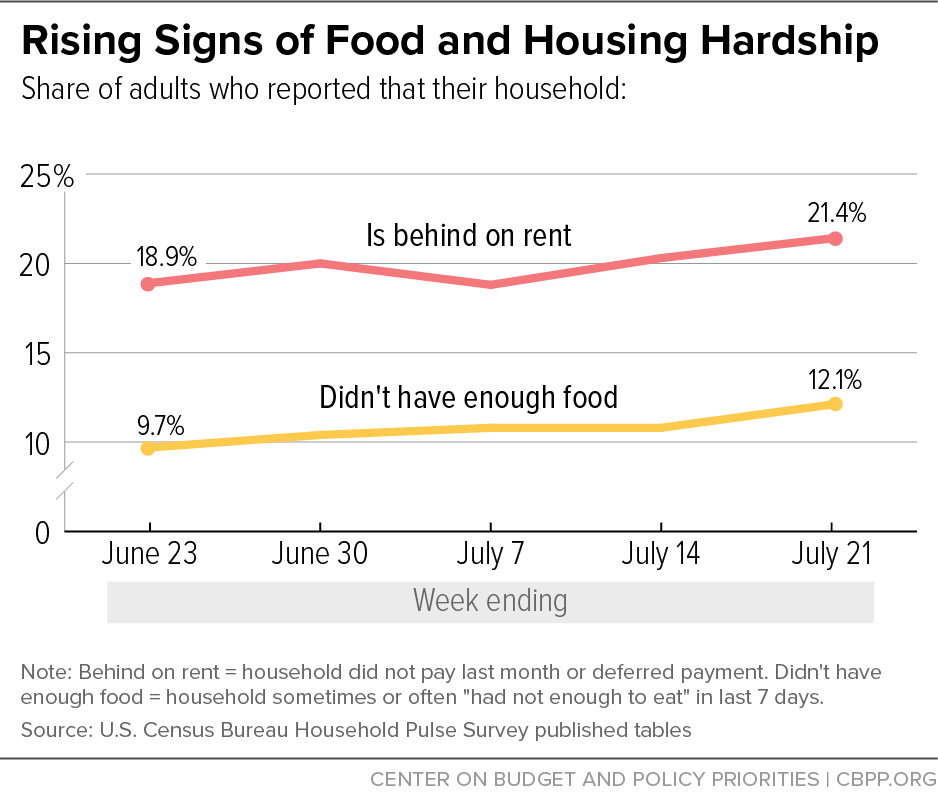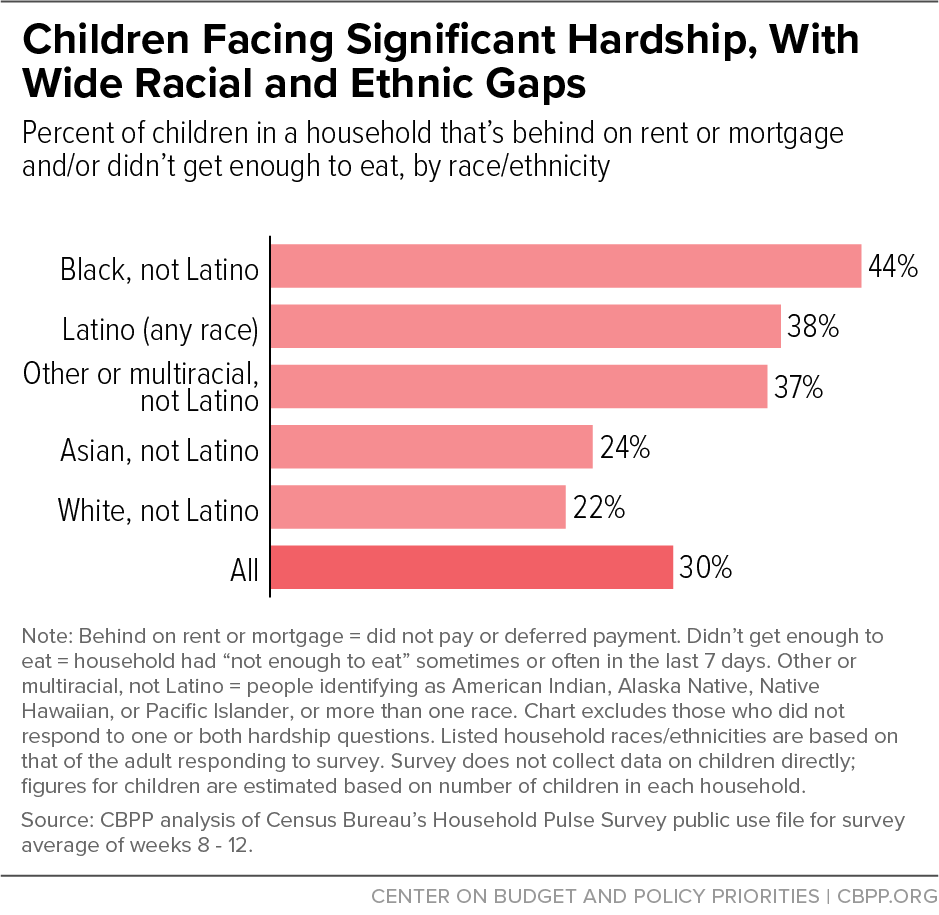BEYOND THE NUMBERS
With new weekly data revealing several troubling trends, including increases in the already significant number of people struggling to buy food and pay rent, policymakers must act now to prevent further hardship.
Over the last four weeks:
- Some 5.6 million more adults reported that their household didn’t get enough to eat in the last week. That brought the number of such adults from 23.7 million in the week ending June 23 to 29.3 million in the week ending July 21, and the percentage of such adults from 9.7 percent to 12.1. (See first chart.)
- The share of adults reporting that the children in their households weren’t getting enough to eat because they “just couldn’t afford enough food” also rose from 17.5 percent in mid-June to 20.2 percent in mid-July, among adults living with children.
- Some 1.6 million more adult renters reported that they’re behind on rent, bringing the total from 13.2 million, or 18.9 percent of adult renters, to 14.8 million, or 21.4 percent.
- The share of adult renters who live with children reporting that they’re behind on rent rose from 26.1 percent to 28.8 percent.
Also underscoring the significant hardship among children, about 8 million of them lived in a household behind on rent. And between 9 and 17 million children lived in a household in which children weren’t getting enough to eat for the week ending July 21.
The data also continue to show wide racial differences in hardship, reflecting longstanding inequities that the current crisis has exacerbated. For an estimated 44 percent of children living with Black respondents, for example, the household either didn’t have enough food or was behind on the rent or mortgage in July.
But according to a five-week average of survey data collected from June 18 to July 21, as shown in the second chart, every racial or ethnic group faced significant hardship; the share of children in households reporting either food or housing hardship was substantial for children of Latino (38 percent), Asian (24 percent), and white (22 percent) respondents, and children of respondents who identified themselves as American Indian, Alaska Native, Native Hawaiian, other Pacific Islander, or multiracial (37 percent).


